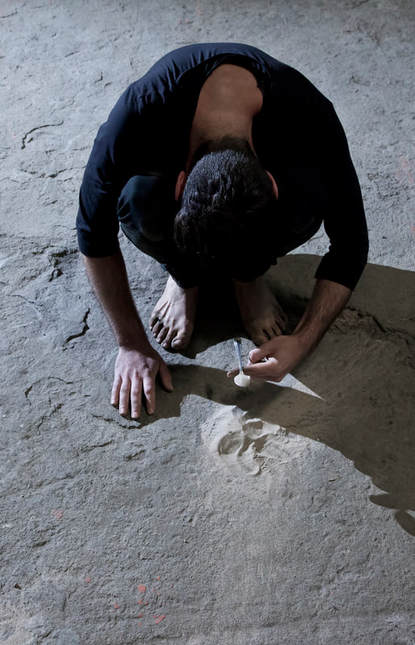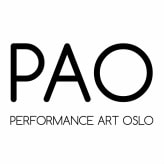Interview with Manuel López
 Photo: Ivan Donchev
Photo: Ivan Donchev
Daimuz, Spain, August 26th
Q: Why / when / how did you start to work with performance, what is your background, how did you arrive at doing performance?
Since I was very little I wanted to play the piano. I started studying music when I was nine years old, and after four years of preparation I went into the conservatory. As time went by and I experienced how closed classical music education was, I started to ask to myself if I really wanted to dedicate my life to music in this way. I wanted to do more than just studying and playing scores and I was very frustrated most of the time, with a lot of doubts. However, I was very lucky because I had an optional course during the last two years called Creativity and Music, where literally, we could do whatever we wanted. It was a space for experimentation, where we would use time, our bodies, and different kinds of materials to create collective experimental sound compositions. I discovered a whole universe with infinite possibilities.
After the conservatory, I decided to study Fine Arts in Valencia. I tried many things, jumping from painting, sculpture, photography, video, installation, film, to programming, but without too much satisfaction. I’ve always seen art as a way to perceive things, as a live experience rather than the material result of a process. So, I didn’t find what I was looking for in any medium until the final year. I joined Bartolomé Ferrando´s Performance course, and that period was probably the most inspiring of my life.
Q: What is your process like when you make a performance, from idea to actual work?
My process is linked to my experiences as a human being, to my everyday life, to how I see society and how I situate myself in it. It fluctuates and can take very different directions.
Sometimes, a material, person, sensation, a particular space or situation activates something in my unconsciousness, and automatically an image, action or concept appears. I reflect on these elements, trying to understand why they came to me. Is it connected with my experiences and events that I have lived through? How can I objectivize and translate this into something comprehensible to others? Or other times I might not think at all and I
perform an action on site and afterwards reflect on what I did.
Other times, I just ask myself questions that involve an array of other questions, and in this process of wondering the ideas emerge.
I use simple drawings or notes to remember my thoughts, as I don’t have a good memory and many times I don’t develop ideas immediately. I often take them up again after a long period of time, with a certain perspective and when something triggers these ideas again.
Q: What role does performance art have in your life / artistic praxis? Do you also work within other fields, like installation, sculpture, drawing, and other expressions? How do they influence / inform each other?
As I see it, performance art is not only a medium but also a way to face life. It is an embodied thinking developed through a methodology of experience; being the body (in all of its forms) as the object and subject of research. I consider the body to be matter that is always attached to a specific time-space (but then again maybe not always…), determined by contexts, but with unknown possibilities yet to be discovered. Working with my body allows me to play with these relationships, to question and examine things through other perspectives, challenge my perceptions of reality and find a possible truth that may not be universal, nor trans-historical, but is rooted to a deeper side of my consciousness.
I mainly work with performance. Depending on the project, I may include other media such as video, photography or sound. There is always an implicit action or performative process in what I do.
Q: With what kind of form / material do you express yourself and use in your work and how did you arrive at using this material?
It depends on the work. I am interested in everyday objects and natural materials, as they have strong poetical potential. Since every person has their own experience with different objects, the action can be opened to multiple readings.
Lately I’ve been interested in improvising with what is already on site, especially minimal materials like traces of dust, dirt or pieces of hair; and also with the qualities of space itself like the architecture, light, or sound behavior.
Q: How do you experience or consider the audience / surrounding? What space / surrounding do you find interesting to work in? How does your surrounding influence your work? Do you involve the public? If so, how?
I think the audience is the key to performance art. Regardless whether a direct physical interaction takes place during a performance or not, the audience is involved since they create the mood and complete the work.
Until now, I haven’t been particularly interested in direct interaction with the audience, as I don’t like to force anybody to take part in actions in that way. I prefer subtle interactions which allow the audience to experience the present moment. This way they can empathize with what is happening and experience a psychological or emotional effect instead. I usually work with durational actions, so I experience the audience as a fleeting presence that momentarily inhabits the space, affecting the general energy and becoming part of the greater whole for the duration of their presence. Then, they move on and everything just continues.
I am interested in all kinds of spaces as I consider that each space has its own unique properties, and I am always open to what a space can offer me. But I can't think of space as an isolated element, because for me, space is inseparable from time. Time-space has an infinite potential that we magnify in order to be able to process and understand what we percieve and experience.
A performance implies a fragment of time-space, an interval, where an encounter between bodies takes place; a dialogue, an exchange of energies, and therefore a modulated process of reality. Time-space grounds the situation in which things may be.
<< Back
